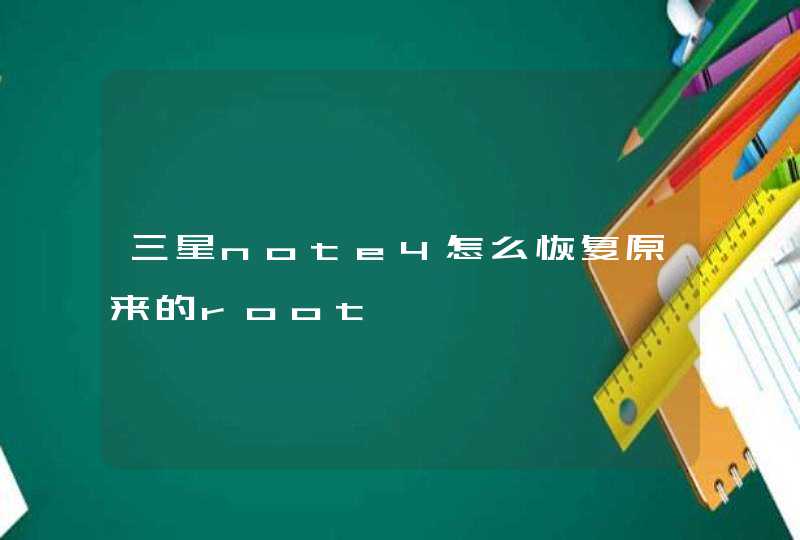
微信商家要开通微信分付收款,需要先满足微信商户的基本申请条件和要求,包括商户类型、经营范围、营业执照、开户行等方面的信息。具体步骤如下:
1 登录“微信支付”,进入商户平台;
2 在“管理中心”下,选择“账户中心”并进入“分付收款”;
3 根据具体的提示和说明,输入微信商户的银行卡号、开户行、姓名、开户行支行信息等;
4 根据业务需求和类型,检查微信商户的资质等条件;
5 提交申请材料和详细信息,等待银行方面的审核和认证;
6 审核通过后,即可开通微信分付收款功能,支付相关款项或收到预定款项。
需要注意的是,在进行开通分付收款功能之前,需要完善微信商户的营业执照、经营范围、注册资金等信息资质,并进行相关的交易风险评估和安全检查。同时,分付收款涉及资金结算和资金安全等方面的问题,需要认真配合银行等相关部门的要求和规定,确保交易的顺畅与安全。
两个不同的渠道,当然要分开编写。
分账管理的意思是行为满足您在单一账号下实现资金分类管理的要求,对您指定的银行结算账户进行分账记录管理,并提供包括分账户记账、收支控制、报告、查询等功能的账户。
分账管理系统高效的多级商户体系,能让平台快速梳理商户结构搭建复杂场景下的商户关系,便捷地管理商户层级和基本息。
写在前面:
最近负责的分账模块需要优化,国内网站上搜了很多和分账相关的内容,发现这部分比较偏向定制化,现成的系统模块或做的比较好的系统都搜不到原型,所以记录一些有价值的相关资料
When you are building your Software as a Service (Saas) Minimum Viable Product (MVP), there is a lot of work that needs to be done It can be difficult to balance this workload
Oftentimes you are so focused on developing the product that you forget that you still need to sell it to people This guide is meant to help you get your billing system off the ground to start making revenue, and show what you should be doing when you are ready to scale up
Subscriptions are key to an effective billing strategy The ability to charge a credit card on a recurring basis makes payment more efficient for both you and the customer
To start selling subscriptions to your clients, you need:
If you don’t have the development cycles to do this, you will be stuck with a painful process of sending invoices manually, giving customers access manually, and adding friction to the on-boarding process
Offering free trials is considered by many to be one of the best ways to find early adopters of your SaaS
When someone is given the opportunity to try your product before committing to a subscription, they are far more likely to become a regular customer
It is good practice to treat your trial users with the same level of support and respect as you would your paying customers Not only are they experiencing your product, they are also experiencing the quality of your service
At the end of the day, you will end up integrating with an external system to handle these use cases I highly recommend looking at Stripe because they have an excellent API to integrate with and a wide range of functionalities
If you don’t want to develop the integration with Stripe yourself, take a look at Servicebot — It comes fully integrated with Stripe and has great Customer Relationship Management (CRM) functionality so you can better manage your customers and subscriptions from a dashboard
During your early stages, Y Combinator founder Paul Graham says, “ Do things that don’t scale ” Although this may sound counter-intuitive, this is the best way to grow your customer base before you begin to even think about scaling
What scaling boils down to is automating the manual processes you’ve found to be effective at growing your startup
When you’re ready to scale your billing solution, here are a few things to consider:
Automating the processes involved with billing — such as what happens when a user requests a trial, adds a funding source, or requests a cancellation — is one of the most important parts of scaling your billing solution
You should first take a look at how you are currently doing your billing Identify all the manual processes that currently are a part of your system, like restricting access if trials expire or reactivating accounts after they’ve been cancelled Once you make that list you can start figuring out how much time is spent performing these and start iterating to reduce the most painful parts
Another big part of automating your process is automating customer outreach based on their status in the billing system
Customer outreach is key to converting customers from free trials to paid When starting out, this process is mostly manual Email people when they sign up, remind them when their trial is ending soon, or ask if they need help getting started
This is not scalable — you need to eventually automate this process, and the best place to focus on is the billing side because so many steps are processed there
To ensure seamless communication between your system and the customer, it is important for your system to be tightly integrated with your billing
One of the best ways to automate your businesses with minimum development effort is to integrate with third-parties who have already solved the problems you are facing
Here are my favorites which I’m using for my own SaaS startup:
Stripe has become the staple of SaaS payment providers With a developer-friendly API and constant new features, I (and countless others) feel it’s an obvious integration point
Some of the features you can integrate with to automate more of your billing are:
There is much more you can do with Stripe, it should be up to you and your startup’s needs to determine how deep of an integration you need
The staple of Intercom is the live chat widget that you embed on your site to enable communication with your customers What many people don’t realize is that Intercom also provides an automation platform If you integrate with Intercom, you can send customized messages to your customer based on what they do with your product
This allows you to automate the communication with your customer so you don’t have to manually email anymore
Example of intercom outreach automation
Servicebot comes out-of-the-box with a Stripe and Intercom integration When a customer requests a free trial, Servicebot creates a new trialing subscription and customer in Stripe and a new user in Intercom, and directs them to a newly-created instance to use
Intercom will send automated messages with the goal of converting to a paying user while Stripe will manage the subscription automatically
A good first step to begin scaling is with automating your billing process When it all comes together, you can connect parts of your business to a centralized location, as well as integrate it with third parties The result of all this will be massive gains in productivity and efficiency that make the effort well worth it
If you are interested in automating parts of your SaaS billing solution to do things like automate customer on-boarding and connecting business processes to your billing system, Let’s talk
在银行卡收单业务中,以平台对接或“大商户”模式接入持证机构,留存商户结算资金,并自行开展商户资金清算——即所谓“二清”行为。人行以“有没有开展商户资金清算“为标准定义二清。
在网络支付业务中,采取平台对接或“大商户“模式——即客户资金先划转至网络平台账户,再由网络平台结算给该平台二级商户。为客户开立的账户或提供的电子钱包等具有充值、消费、提现等支付功能。
无论是银行卡收单业务还是网络支付业务,以上都叫无证经营支付业务。
二清指的是:线下使用银行卡进行的消费由pos服务提供商收单,然后结算给使用其pos服务的商家。因pos服务提供商无清算资质,所以这种方式属于违规。
网络支付主要指的是:买家支付的货款先到第三方交易撮合平台在支付机构开设的账户,然后由平台结算给平台的商家。因为第三方交易撮合平台没有清算资质,这种也是属于违规。如果由无清算资质的支付机构进行清算,也是不合规的。这点要注意,不是所有的支付机构都有清算资质,目前支付机构中只有银联和网联有清算资质。
本文讨论的主要是网络支付业务的无证经营问题。线下收单业务原理是一样的,只是支付方式不一样。
业务模式为第三方交易撮合(为卖家和买家提供服务/商品等的交易撮合),且资金是大账户模式(先进平台在支付机构开的账户,然后通过平台自己结算给商家)这种都算是无证经营支付业务,是不合规的。
例如:电商平台拼多多、蘑菇街,综合类生活平台美团点评,旅游平台携程等。
无论交易物是实物、虚拟物品还是服务都是一样。只要交易物不是平台自营的,就需要无证经营支付业务问题。
钱包类功能,即能够充值、消费、提现也是属于无证经营支付业务。通过虚拟货币的方式也是不合规的,因为虚拟货币也具有了金融价值,能够等价交换其他商品/服务,如得到的得到币。
严格意义来讲,以区块链技术发行的虚拟币也是不合规的,首先这种虚拟币只能算是一种虚拟商品,其次他的原理同平台发行的虚拟货币是一样的,具有等价交换熟悉。在此不做深入讨论。
政府发布217号文,态度非常坚定,力度也比较大,主要原因如下:
对于新平台来说,无证经营支付业务问题是一定要考虑的问题,不要以为新平台比较小,可以打打擦边球。发现之后可能是会比较严重,这种行为属于明知故犯,有可能导致平台无法继续经营。
建议新电商平台上线伊始就解决二清问题,避免上线后更大的损失。
笔者根据实际的经验总结了目前市面上的方案,并进行了对比,供大家参考。
总体来说,目前市面上的方案分为4类。分别是银行系统方案、微信分账方案、三方支付系统方案、四方系统服务商方案,笔者将分别介绍。
支付宝暂没有分账方案,估计2020年针对支付宝体系内开放分账功能,短时间内应该不会对外开放,目的同微信一样,是为了提高竞争壁垒,毕竟支付宝和微信都自有或投资了电商平台。
通过对比可知,大平台或对系统要求较高的平台可以选择银行系统方案。如果仅仅只是做微信服务号或小程序的可以考虑微信分账功能。对费用比较敏感的可以选择四方服务商系统方案,但是有一定合规风险。比较大众的选择就是三方支付系统方案,门槛适中,合规性没有问题。
笔者研究了上述的四种方案对应的具体产品,分别是平安银行的“电商见证宝”、微信分账、通联“云商通”、投融汇“E帐通”、投融汇“E清算”、投融汇“智富通”(需要开银行实体账户有税费)。供读者参考。
电商见证宝是平安为电商平台提供的支付解决方案,但是实际上客户不仅仅局限于电商,可适用于B2CB2BO2O等多类型的互联网交易平台。于2014年推出,已服务100多家电商平台、产业链客户,可提供整套解决方案,拥有较多成功案例。
应用场景:
电商见证宝服务平台20(非自营平台):
1)子账户类型
平台开立子账户时,分为商户子账户及普通子账户。商户子账户资金只收不付,会员间交易仅支持入账至商户子账户。
2)充值环节
3)退款环节
微信分账功能主要是:为特约商户完成订单收单成功以后的资金分配提供的服务。
应用场景如:停车场缴费、外卖订餐、高校缴费、加油站缴费、预订酒店等。
特约商户 是指:与收单机构签订银行卡受理协议、按约定受理银行卡并委托收单机构为其完成交易资金结算的企事业单位、个体工商户或其他组织,以及按照国家工商行政管理机关有关规定,开展网络商品交易等经营活动的自然人。包括实体特约商户和网络特约商户2种。
实体特约商户 是指:通过实体经营场所提供商品或服务的特约商户,如:商店、饭店、旅馆等。
网络特约商户 是指:基于公共网络信息系统提供商品或服务的特约商户,如自营类型的电商/服务提供商等。
分账可以分给微信支付的商户账户(非银行账户)或者微信支付的用户零钱账户,一笔订单最多可以分给50个分账接收方。
分账资金的冻结期默认是30天。从订单支付成功之日起,30天内需要发起分账,若30内未发起分账,待分账资金将会自动解冻给分账方。
允许服务商分账的最大比例为30%。
通联是一家老牌支付机构,有6张支付牌照。
云商通平台是一个基于虚拟账户和订单支付体系的开放平台,为商户的各类业务场景提供虚拟账户、支付产品和资金管理服务。
通联提供虚拟账户和聚合支付服务,合作银行提供资金存管、结算服务。云商通比较灵活,可根据合作方所在地选择合作银行,可通过分公司对接银行,也可通过通联总部对接银行,定制化程度较高。如果合作银行未与通联合作周期可能较长,需要半年左右的时间才能上线。
通联通过银行存管方式帮助平台解决无证经营支付业务的问题。有3种存管模式:请对接模式一、强对接模式二、弱对接模式。
部分合作伙伴如下:
强对接模式一: 资金通过通联支付进银行账户,银行进行资金结算,结算资金划拨至银行通联备付金账户后,由通联备付金账户付款给商家银行账户。该模式存在一个转代付的问题(通联备付金账户代付),长期来看,如果政策收紧该模式也属于不合规。
强对接模式二: 与强对接模式类似,区别在于代付通过银行直接完成。没有转代付的问题。推荐平台使用该模式对接。
弱对接模式: 该模式特点是平台基本无需开发,适合开发能力较弱的平台。
平台需要在银行开立存管账户,银行帮助平台进行资金结算,平台将结算资金通过柜面划付/网银转账的方式,划拨至通联在银行的备付金账户,由备付金账户付款给商家银行账户。
该模式也存在转代付的问题,且资金只能通过通联账户作为唯一出金路径,需要线下手动操作的工作较多。
投融汇有三种对接方案:E帐通是与通联合作的解决方案,E清算是与招商银行合作的解决方案,智富通是与富邦华一银行合作的解决方案。
服务逻辑图:
投融汇三种对接方案的服务逻辑图相同,详见下图。
以上是作者对4这种方案的理解,供大家参考,如果有问题欢迎大家反馈讨论。读者可根据自己平台的要求和特征选择合适的支付方案进行对接。
原文:
https://mediumcom/free-code-camp/how-to-build-and-scale-your-saas-billing-solution-d6111b9ae253
打开我的钱包有个AA收款的功能,你可以试试微信AA收款包含很多功能,可以收取聚餐、活动、班费、旅游费等款项击下一步以后进入到发送收款单窗口,在这里聚会AA和普通筹款的步骤基本是相同的,可以点击发送收款单给好友,也可以点击扫一扫收款二维码哦~
微信支付分账功能需要商户号具备营业执照等资质信息,通过微信支付分账申请后,需要等待微信支付的审核和开通,并完成分账账户的绑定等操作。这个过程通常需要一定的时间,具体时间长短取决于相关程序的处理情况和验证周期。
一般来说,微信支付分账申请审核周期为 1-3 个工作日,具体时间可能因为商户号的审核情况而有所变化。审核通过后,需要在微信支付商户平台完成分账账户的绑定和相关设置。这些步骤完成后,商户就可以使用微信支付分账功能,正常收款和结算了。
需要注意的是,如果商户信息存在不完整或错误,或者商户所经营的业务涉及支付风险等因素,可能会导致申请被拒绝或延迟处理。因此,在申请微信支付分账时,建议提前准备好商户资质和相关信息,并仔细阅读微信支付分账审核规则和说明,以保证申请的顺利进行。




































































